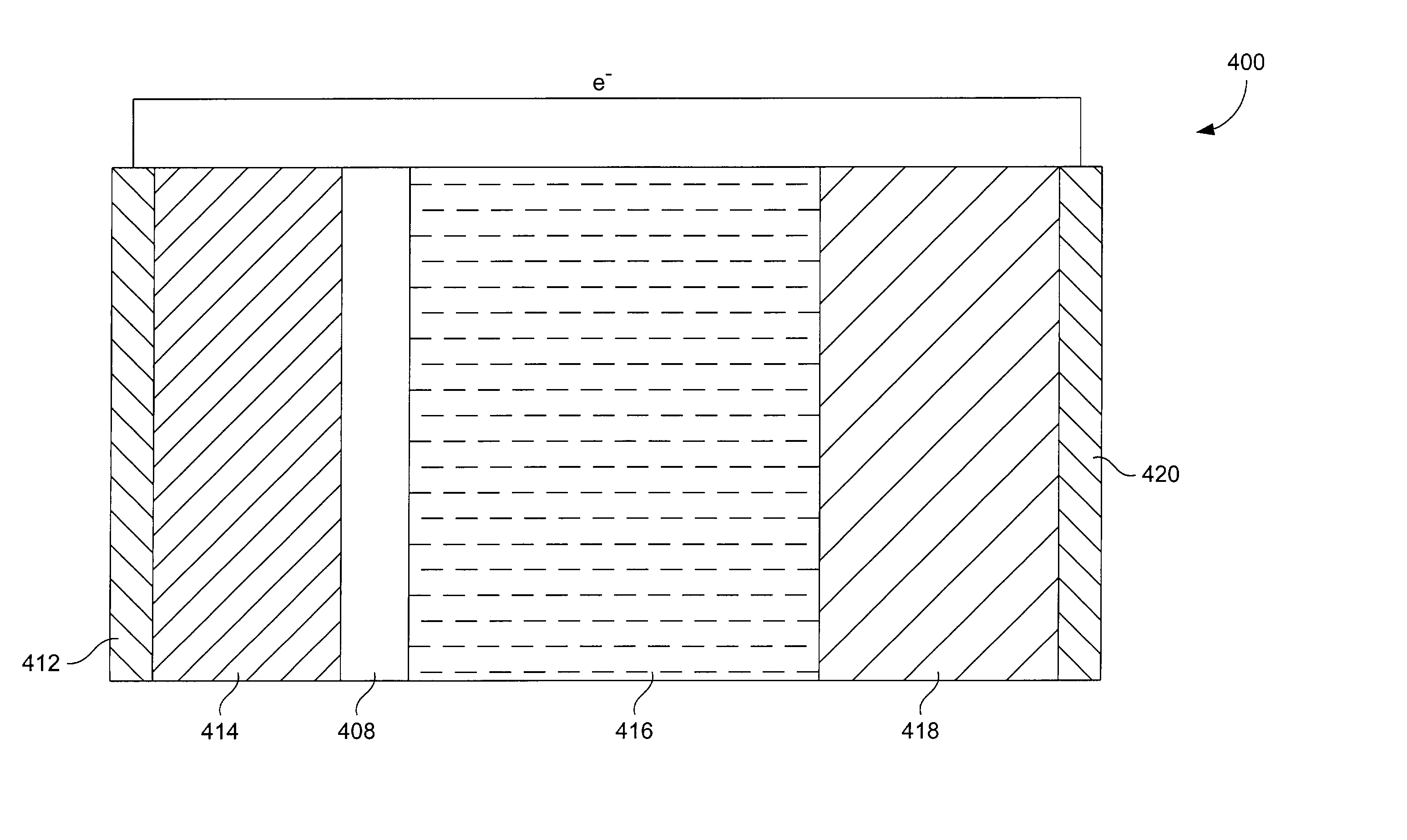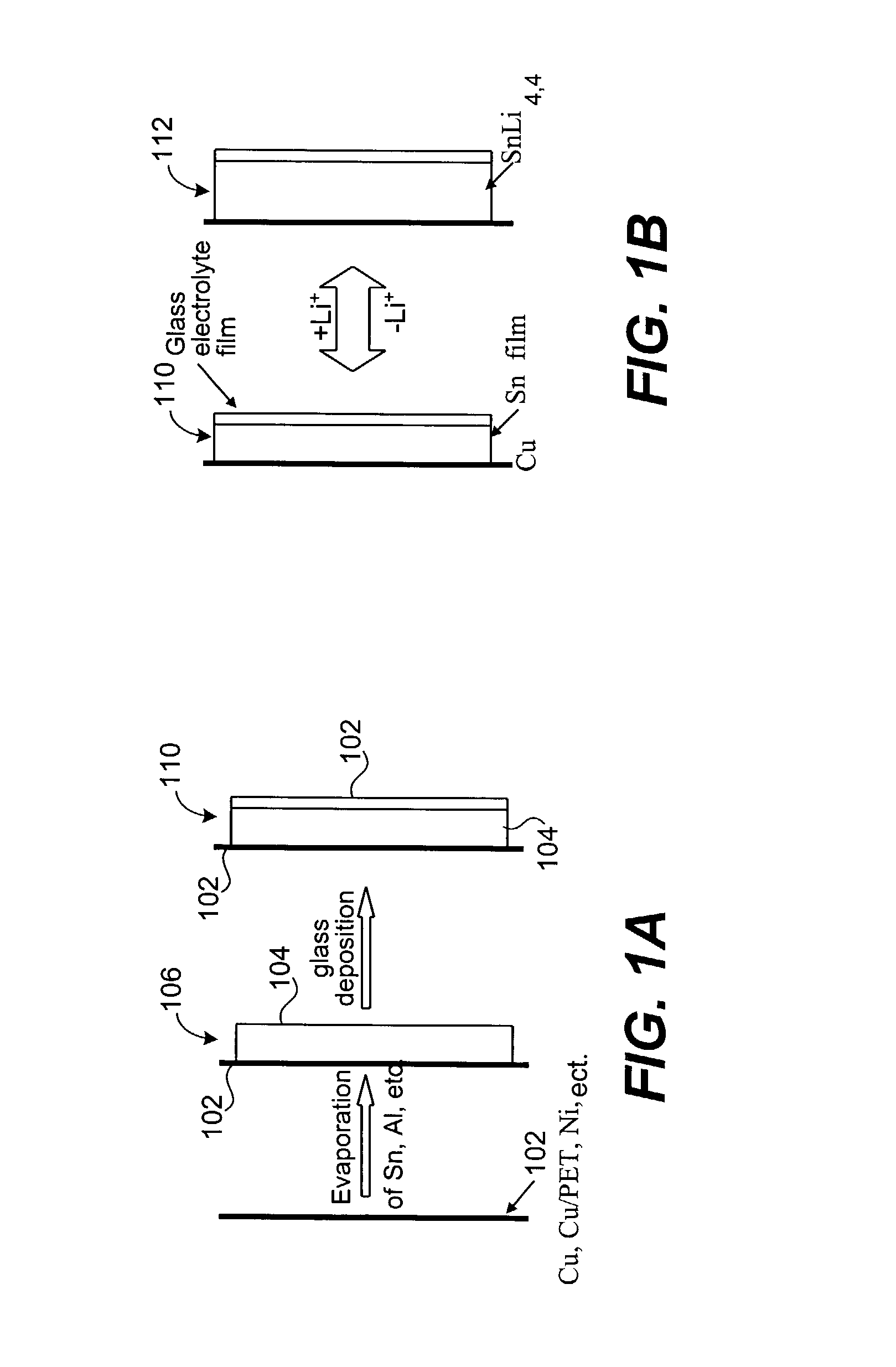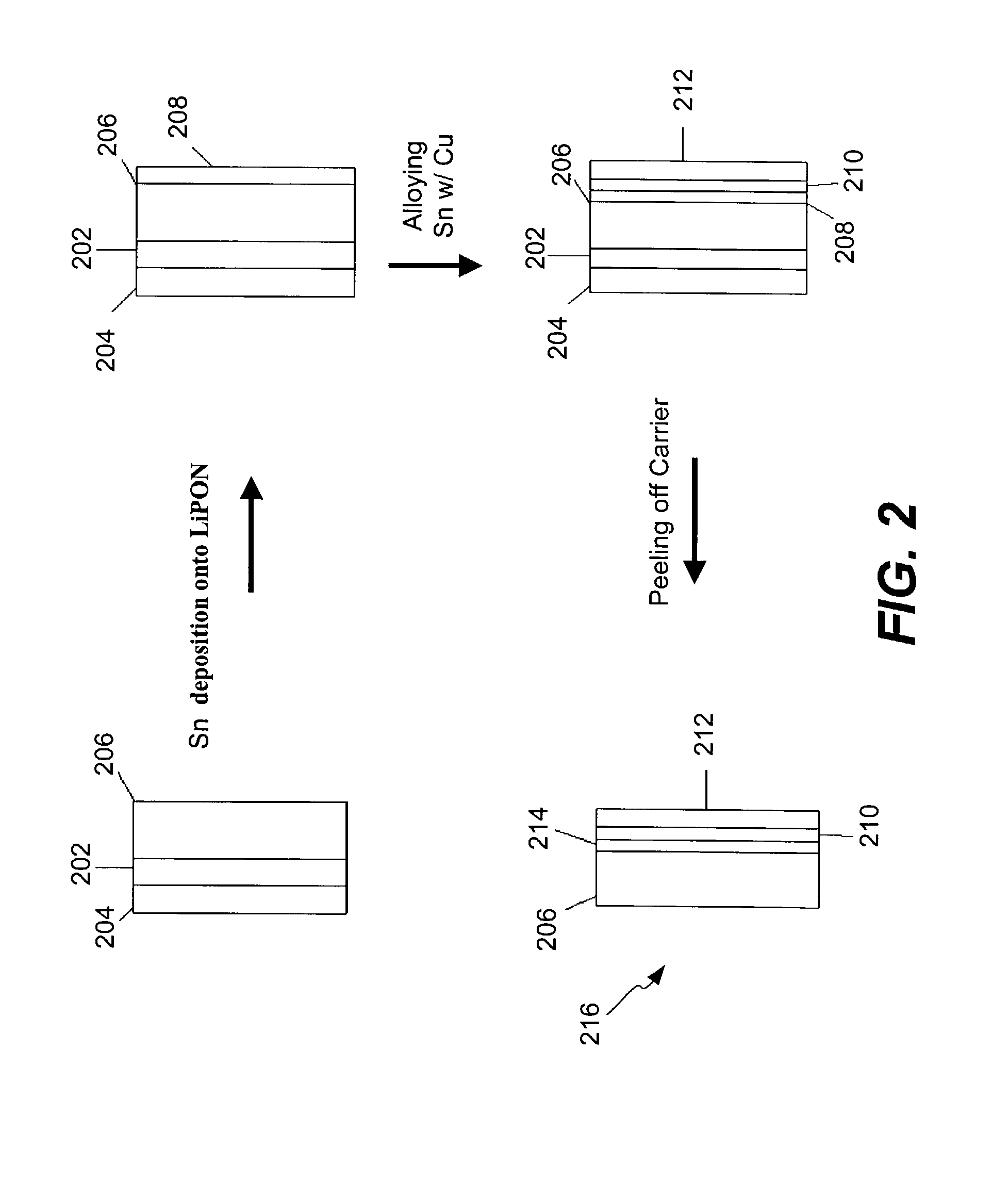Encapsulated alloy electrodes
a technology of alloy electrodes and electrodes, which is applied in the direction of variable capacitors, cell components, electrochemical generators, etc., can solve the problems of failure of rechargeable lithium metal batteries
- Summary
- Abstract
- Description
- Claims
- Application Information
AI Technical Summary
Benefits of technology
Problems solved by technology
Method used
Image
Examples
example
[0101] The following Example is provided to illustrate certain aspects of the present invention. The Example will serve to further illustrate the invention but is not meant to limit the scope of the invention in any way.
[0102] 1. Cu--Sn Alloy Preparation
[0103] Two methods of Cu--Sn alloy preparation were used:
[0104] Method 1
[0105] A 50 .mu.m thick Cu foil (99.999% purity) from Alfa Aesar was used as a substrate for Sn deposition. Sn was thermally evaporated under vacuum (.about.2.times.10.sup.-5 torr) using a tungsten basket. Sn wire used for evaporation was 99.99% pure. The thickness of the deposited Sn layer was 2.0 .mu.m according to Quartz Monitor Thickness measurements. Then, the Sn film on the Cu substrate was transferred to an Ar-filled glove box, where it was placed in an oven and annealed at 200.degree. C. for 20 hours under constant pressure of about 4500 psi in order to smoothen the surface of the intermetallic compound layer during formation. This was achieved by placing...
PUM
| Property | Measurement | Unit |
|---|---|---|
| Thickness | aaaaa | aaaaa |
| Thickness | aaaaa | aaaaa |
| Angle | aaaaa | aaaaa |
Abstract
Description
Claims
Application Information
 Login to View More
Login to View More - R&D
- Intellectual Property
- Life Sciences
- Materials
- Tech Scout
- Unparalleled Data Quality
- Higher Quality Content
- 60% Fewer Hallucinations
Browse by: Latest US Patents, China's latest patents, Technical Efficacy Thesaurus, Application Domain, Technology Topic, Popular Technical Reports.
© 2025 PatSnap. All rights reserved.Legal|Privacy policy|Modern Slavery Act Transparency Statement|Sitemap|About US| Contact US: help@patsnap.com



